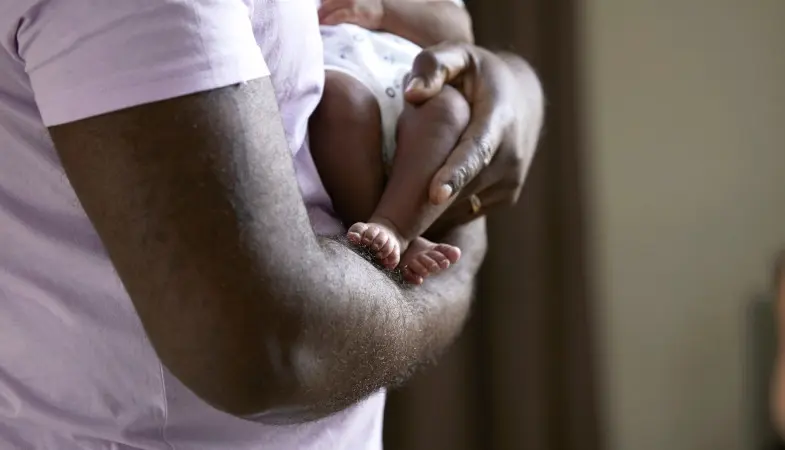Bringing your newborn home for the first time can be a daunting experience, especially for those who have never had a baby to care for before. There are a lot of things to learn and so many tasks to master. One of the first things you’ll have to get to grips with as a new parent is how to feed your baby, as well as knowing when to feed them and how much. If you choose to bottle feed, you also need to know how to prepare their bottles properly.
Although this can seem like a big moment, taking some time to learn how to do it beforehand can help you feel more comfortable and confident.
Here’s everything you need to know about how to bottle feed your baby, right through to weaning and eating solids. We’ll answer all of your most common queries, including:
When do you need to feed your baby?
Don’t worry too much about knowing when to feed your baby – they’ll definitely tell you, in their own way, when they’re hungry. Babies will mostly sleep when they’re younger, and will cry when they wake up to let you know they’re hungry. Even when they’re a little older and more alert and awake, crying is still a great cue to let you know it’s time for dinner.
Crying isn’t the only cue to look out for, however. There are a number of signs your baby might give you to show that they are hungry, including sucking on their fist or fingers, making little murmuring sounds, or opening and closing their mouth repeatedly.
How to make up a baby bottle
If you choose to bottle feed your little one, for the first few months of their life, they will exclusively drink baby milk or formula, which means making fresh bottles is a skill you’ll need to master quickly. Thankfully it’s not too difficult, and our top tips will have you mastering the art in no time at all.
Choosing a bottle
Choosing the type of bottle you’re going to use is an important step in feeding your baby. There are loads to choose from, from anti-colic bottles to easy-grip shapes for when they’re learning to feed themselves.
Generally, those with a soft teat that mirrors the shape and movement of a breast are more likely to be accepted by your baby. If your baby doesn’t like a certain type of bottle initially, it can be worth persevering to let them get used to it, or you might want to try some new shapes until you find one they are happier with.
Sterilise, sterilise, sterilise
As your baby’s immune system isn’t quite as strong as an adult’s, any infections or bugs can be harmful to them, so sterilising is a vital task. Be sure to wash your hands and clean all surfaces and utensils before you start, as well as sterilising the teat, bottle and lid each time you make a fresh bottle.
Sterilisers are an easy and fuss-free way to make sure everything is cleaned and ready to go, but if you don’t have access to one, it can be just as effective to pop the clean bottle and lid into boiling water to get rid of any germs.
Boil the water
The best way to eliminate bacteria is to always use boiling water that has been left to cool, getting rid of any germs and minimising the risk to your baby. Boil the kettle and then leave it to cool down for around 20 to 30 minutes before use, before measuring out the volume of water as directed on the product packaging to make up the bottle.
Test the temperature
We’ve all seen it done a million times, but there really is no better way to ensure your baby’s bottle is the right temperature than testing it out on the inside of your wrist. The sensitivity of the skin here means it’s easy to test if the bottle is just right for your baby.
It’s important to ensure the milk isn’t too hot, but also that it’s warm enough that it won’t upset their stomach. The ideal bottle will be body temperature1, but if it’s too hot, simply run the bottle under the cold tap to cool it down a little. Never heat milk in the microwave, as this can lead to heat spots forming in the milk which can scald your baby.
Don’t reuse
If your baby doesn’t drink all their milk or formula, you should always throw out the leftovers and use a fresh bottle for their next feed. Reheated bottles can spread bacteria and be dangerous to your baby.
How to feed your baby
When it comes to feeding your baby their bottle, it may feel awkward at first, but it will soon become second nature. Follow these steps and have a bib or a muslin at hand to keep them clean throughout.
Hold your baby comfortably on your lap and support their head
Aim for them to be in a position that’s half way between laying down and sitting up
Try to tilt the teat of the bottle so it’s full of milk - you’ll need to tilt higher as they drink more
Make sure that the teat isn’t bent so your baby can suckle easily
Finish feeding as they slow down or rest
Stop feeding when your baby either stops sucking or turns away to show that they’ve had enough.
After a feed, it’s important to burp your baby so they don’t suffer trapped wind, which can cause them to feel uncomfortable. There are a few different methods for burping your baby, so it’s all about finding which one feels most comfortable for you both2.
Sitting up on your lap. Turn your baby to face away from you and place the palm of your hand on their chest, support their chin and jaw then gently tilt forward patting their back with your other hand.
Over your shoulder. Rest their chin on your shoulder, support their head with your hand and gently pat them on the back.
How to feed your baby solid foods
Moving your baby away from liquids and on to solid foods is a slow process. It usually starts at around six-months old,3 but it can take a while for them to get used to new tastes and flavours, so don’t worry if they take some time to adapt to their new diet.
When to start a baby on solids:
There are a number of ways you’ll know when your baby is ready to start trying solid foods. These will include when they are:
Sitting up and holding their head steady
Better at picking things up
Swallowing food easily and not spitting it back out
At first, it’ll be best to try your baby with tiny amounts of soft foods, two or three times a day to get them used to experiencing all the new textures and flavours. If you’re spoon feeding, always wait until they open their mouths before forcing any food in. From there, they’ll soon get used to all of the exciting new flavours they can try and feeding them will become a far easier task.
Don’t forget to look after yourself while the whirlwind of becoming a new parent sets in. Check out our guide to looking after yourself post birth for some more top tips.
1 https://www.nhs.uk/conditions/pregnancy-and-baby/making-up-infant-formula/
2 https://www.babycentre.co.uk/a1051322/how-to-burp-your-baby
3 https://www.nhs.uk/conditions/pregnancy-and-baby/solid-foods-weaning/
JOHNSON'S®Pioneering Safety and Science in Baby Care
We are committed to working with Parents, Healthcare Professionals and Scientists to ensure our baby products continue to deliver high standards of safety and care.




